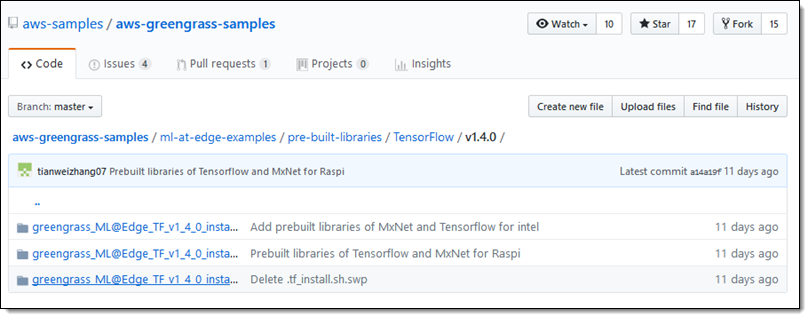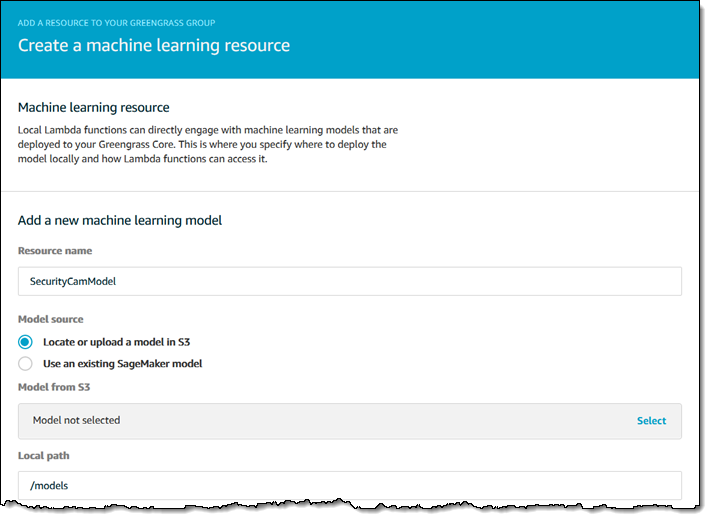AWS News Blog
New – Machine Learning Inference at the Edge Using AWS Greengrass
|
|
What happens when you combine the Internet of Things, Machine Learning, and Edge Computing? Before I tell you, let’s review each one and discuss what AWS has to offer.
Internet of Things (IoT) – Devices that connect the physical world and the digital one. The devices, often equipped with one or more types of sensors, can be found in factories, vehicles, mines, fields, homes, and so forth. Important AWS services include AWS IoT Core, AWS IoT Analytics, AWS IoT Device Management, and Amazon FreeRTOS, along with others that you can find on the AWS IoT page.
Machine Learning (ML) – Systems that can be trained using an at-scale dataset and statistical algorithms, and used to make inferences from fresh data. At Amazon we use machine learning to drive the recommendations that you see when you shop, to optimize the paths in our fulfillment centers, fly drones, and much more. We support leading open source machine learning frameworks such as TensorFlow and MXNet, and make ML accessible and easy to use through Amazon SageMaker. We also provide Amazon Rekognition for images and for video, Amazon Lex for chatbots, and a wide array of language services for text analysis, translation, speech recognition, and text to speech.
Edge Computing – The power to have compute resources and decision-making capabilities in disparate locations, often with intermittent or no connectivity to the cloud. AWS IoT Greengrass builds on AWS IoT, giving you the ability to run Lambda functions and keep device state in sync even when not connected to the Internet.
ML Inference at the Edge
Today I would like to toss all three of these important new technologies into a blender! You can now perform Machine Learning inference at the edge using AWS Greengrass. This allows you to use the power of the AWS cloud (including fast, powerful instances equipped with GPUs) to build, train, and test your ML models before deploying them to small, low-powered, intermittently-connected IoT devices running in those factories, vehicles, mines, fields, and homes that I mentioned.
Here are a few of the many ways that you can put Greengrass ML Inference to use:
Precision Farming – With an ever-growing world population and unpredictable weather that can affect crop yields, the opportunity to use technology to increase yields is immense. Intelligent devices that are literally in the field can process images of soil, plants, pests, and crops, taking local corrective action and sending status reports to the cloud.
Physical Security – Smart devices (including the AWS DeepLens) can process images and scenes locally, looking for objects, watching for changes, and even detecting faces. When something of interest or concern arises, the device can pass the image or the video to the cloud and use Amazon Rekognition to take a closer look.
Industrial Maintenance – Smart, local monitoring can increase operational efficiency and reduce unplanned downtime. The monitors can run inference operations on power consumption, noise levels, and vibration to flag anomalies, predict failures, detect faulty equipment.
Greengrass ML Inference Overview
There are several different aspects to this new AWS feature. Let’s take a look at each one:
Machine Learning Models – Precompiled TensorFlow and MXNet libraries, optimized for production use on the NVIDIA Jetson TX2 and Intel Atom devices, and development use on 32-bit Raspberry Pi devices. The optimized libraries can take advantage of GPU and FPGA hardware accelerators at the edge in order to provide fast, local inferences.

Model Building and Training – The ability to use Amazon SageMaker and other cloud-based ML tools to build, train, and test your models before deploying them to your IoT devices. To learn more about SageMaker, read Amazon SageMaker – Accelerated Machine Learning.
Model Deployment – SageMaker models can (if you give them the proper IAM permissions) be referenced directly from your Greengrass groups. You can also make use of models stored in S3 buckets. You can add a new machine learning resource to a group with a couple of clicks:

These new features are available now and you can start using them today! To learn more read Perform Machine Learning Inference.
— Jeff;
